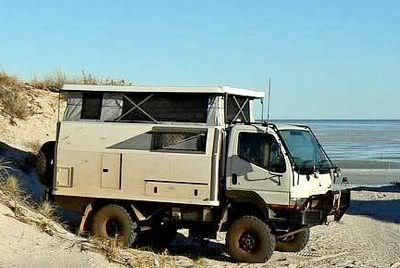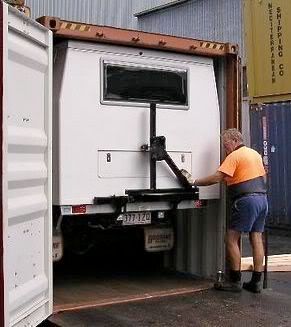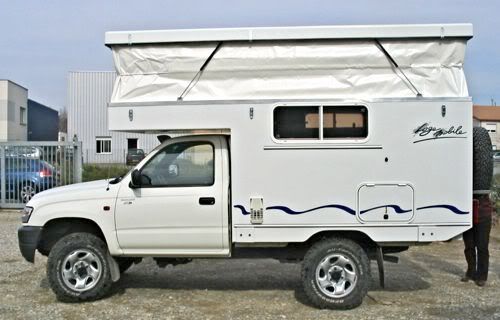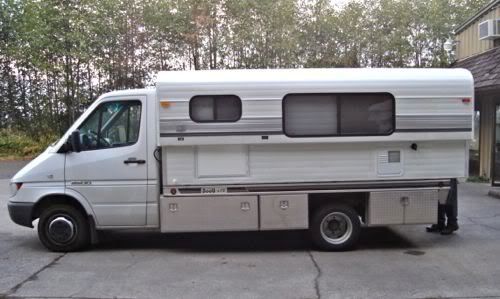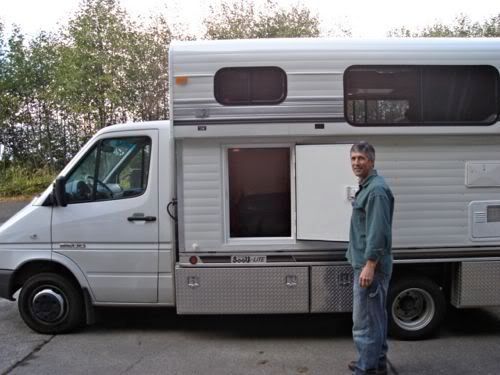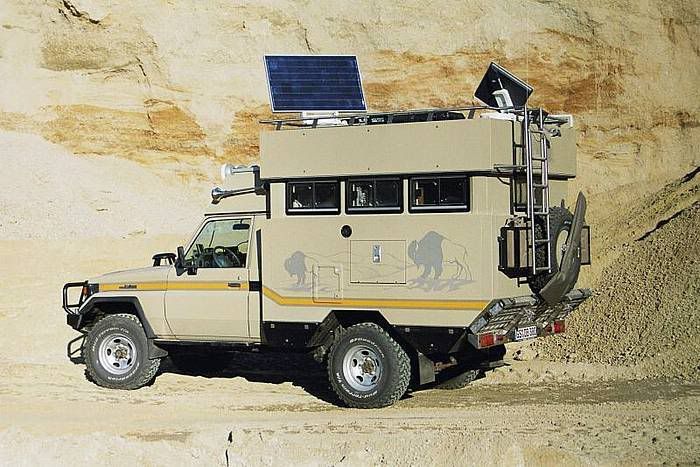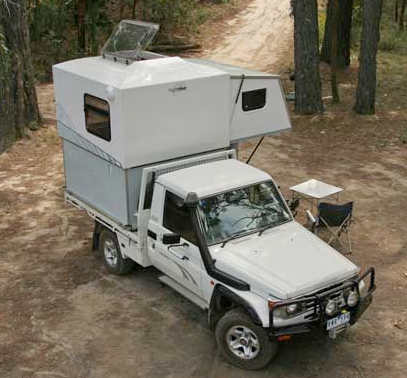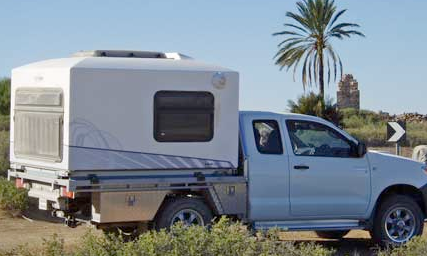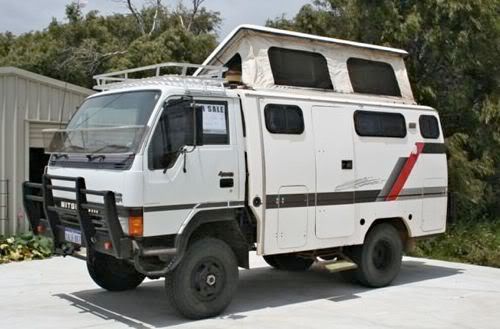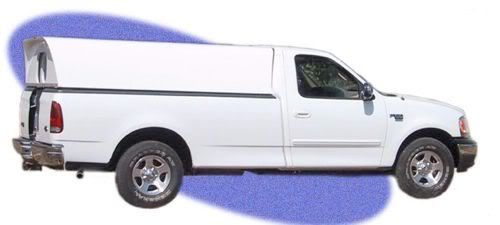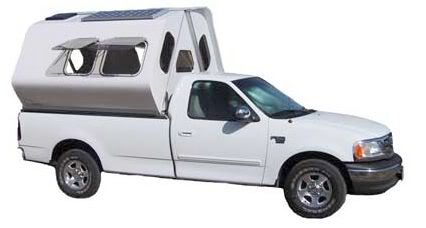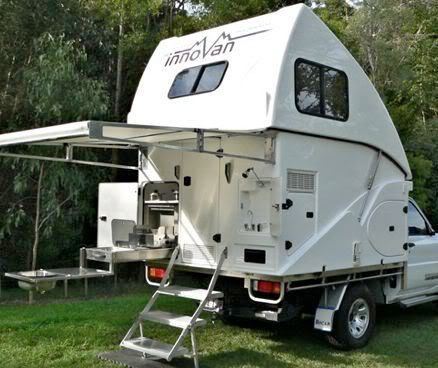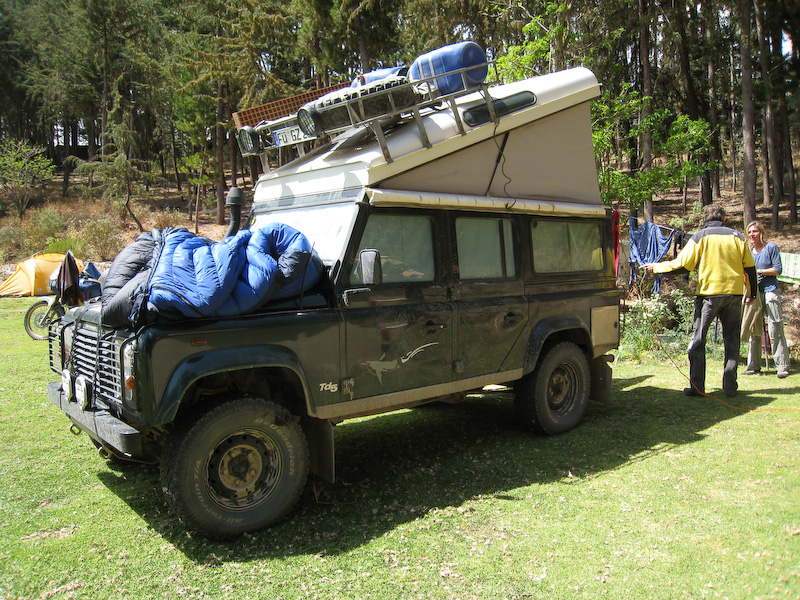This thread is prompted by a request from Mike Van Pelt for
a place to talk about the height and design of the rooff for
an expedition camper
I can think of five different directions you might go with a roof,
plus a few pros and cons for each design.
What do you think?
Chip Haven
1. Hard top with fixed roof height
This is the way most campers are built, with full stand-up room
inside at all times
For example, here is group member FusoFG's full height camper
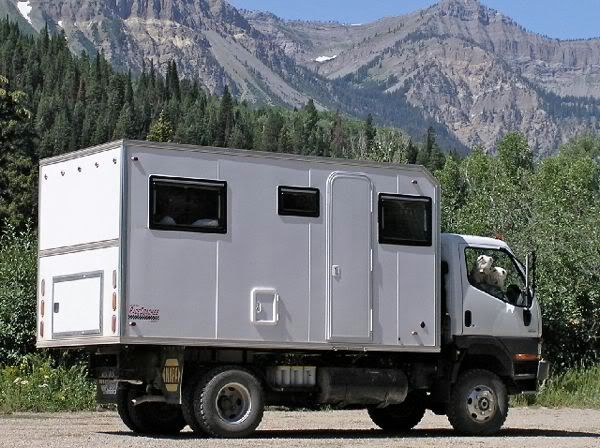
Don and Kim Greene's camper is also full height

advantages:
easier to build
less complicated / no roof-raising mechanism to fail
full interior is available anytime
usually possible to have larger glass windows
more interior cabinets mounted on walls
no complicated seals / dust can't enter as easily
fewer concerns about weight placed on the roof
not as obvious that you're camping on the street overnight
disadvantages:
clearance overhead can be a problem on trails
Jeeps in Colorado
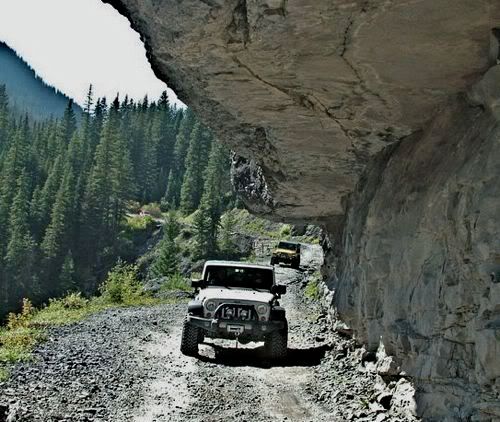
Stephen Stewart's Unimog camper
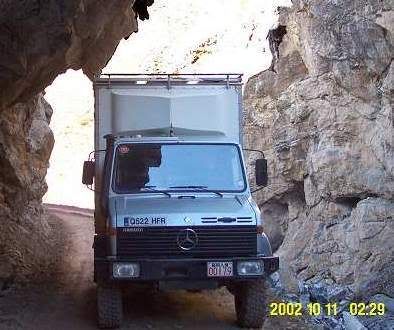
height an issue on off-camber roads (camper leans out farther)
Mike Van Pelt's Unicat U500 in action

can't load into a container
...may be possible by mounting small-diameter steel disc wheels
Are these issues enough to dissuade you from choosing a taller camper?
a place to talk about the height and design of the rooff for
an expedition camper
I can think of five different directions you might go with a roof,
plus a few pros and cons for each design.
What do you think?
Chip Haven
1. Hard top with fixed roof height
This is the way most campers are built, with full stand-up room
inside at all times
For example, here is group member FusoFG's full height camper

Don and Kim Greene's camper is also full height

advantages:
easier to build
less complicated / no roof-raising mechanism to fail
full interior is available anytime
usually possible to have larger glass windows
more interior cabinets mounted on walls
no complicated seals / dust can't enter as easily
fewer concerns about weight placed on the roof
not as obvious that you're camping on the street overnight
disadvantages:
clearance overhead can be a problem on trails
Jeeps in Colorado

Stephen Stewart's Unimog camper

height an issue on off-camber roads (camper leans out farther)
Mike Van Pelt's Unicat U500 in action

can't load into a container
...may be possible by mounting small-diameter steel disc wheels
Are these issues enough to dissuade you from choosing a taller camper?

